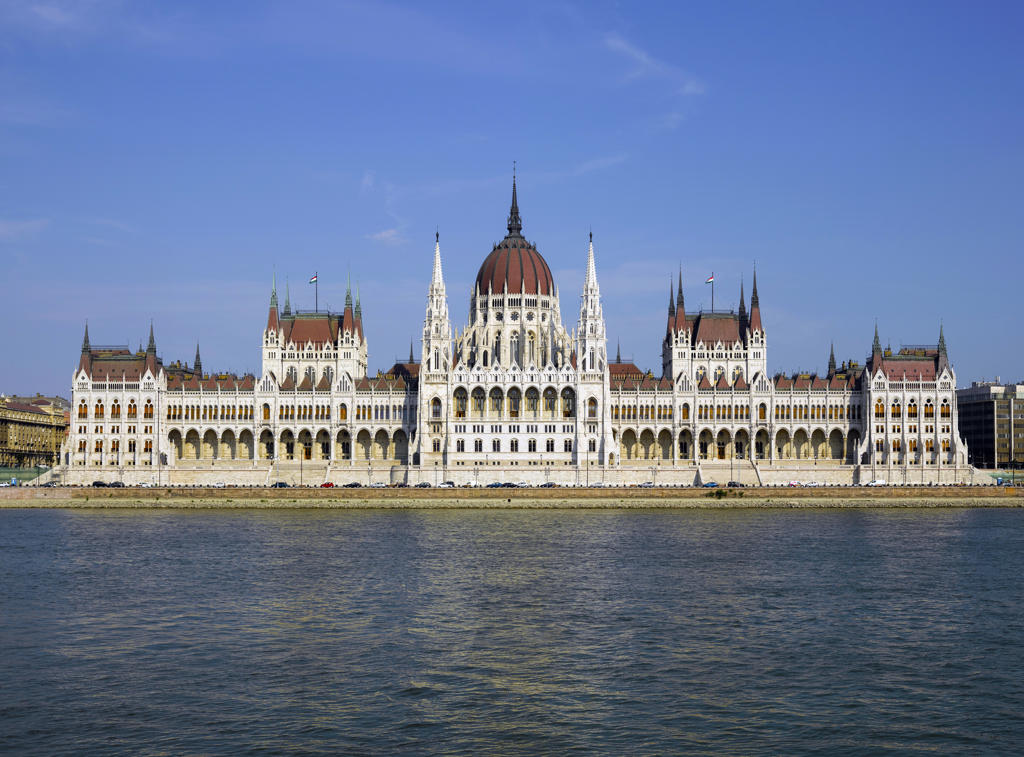About Parliament Building
The Hungarian Parliament Building rises majestically along the banks of the Danube River, its neo-Gothic spires piercing the sky. The intricate façade features pointed arches, statues of Hungarian rulers, and ornate carvings that reflect the grandeur of 19th-century architecture. The central dome, standing 96 meters tall, symbolizes the year 1896, marking Hungary’s millennium of statehood. The building’s symmetry and balance create a sense of harmony, while its sheer scale commands attention.
Constructed between 1885 and 1904, the Parliament Building was designed by Imre Steindl to celebrate Hungary’s independence and national pride. Its location on Kossuth Lajos Square places it at the heart of Budapest’s political and cultural life. The building’s design draws inspiration from the British Parliament, yet incorporates Hungarian motifs, making it a unique blend of international and local styles. Today, it serves as the seat of the National Assembly and a symbol of Hungary’s enduring democracy.
Architectural Grandeur
The Parliament’s exterior showcases over 40 kilograms of gold leaf, intricate stonework, and nearly 90 statues of historical figures. The façade is adorned with coats of arms and motifs representing Hungary’s regions, while the central dome is flanked by two symmetrical wings. The building’s 691 rooms and 10 courtyards reflect its monumental scale, making it one of the largest parliament buildings in the world. The interplay of light and shadow on the façade highlights the craftsmanship of its design.
Plan your perfect trip to Budapest with Travo! Download now and start exploring.
Historical Significance
The Parliament Building stands as a testament to Hungary’s resilience and national identity. Its construction coincided with the Austro-Hungarian Compromise of 1867, which granted Hungary greater autonomy within the empire. The building’s design and location were chosen to emphasize Hungary’s sovereignty and its role in shaping European history. The year 1896, commemorated by the dome’s height, marks the thousandth anniversary of the Magyar conquest of the Carpathian Basin.
Artistic Details
Inside, the Parliament is equally breathtaking. The grand staircase features red carpeting and gilded ceilings, while the central hall is illuminated by stained glass windows and chandeliers. The Holy Crown of Hungary, a symbol of the nation’s monarchy, is displayed in the central dome. Frescoes and sculptures throughout the building depict scenes from Hungarian history, blending art and politics into a cohesive narrative. The craftsmanship of the interiors reflects the pride and ambition of the era.
Living History
Today, the Parliament Building is not only a political hub but also a cultural landmark. Guided tours allow visitors to explore its opulent interiors and learn about Hungary’s legislative process. The building hosts national celebrations, including the annual commemoration of Hungary’s Revolution of 1848. Its illuminated façade at night creates a stunning reflection on the Danube, drawing locals and tourists alike to admire its beauty.
Symbol of National Identity
The Parliament Building embodies Hungary’s journey through history, from its medieval roots to its modern democracy. Its neo-Gothic style reflects the nation’s aspirations, while its location on the Danube connects it to the lifeblood of Budapest. As a symbol of unity and independence, the building continues to inspire pride and admiration, standing as a beacon of Hungary’s cultural and political heritage.

Map loading...
Location
1-3 Kossuth Lajos Square, 1055, Budapest
